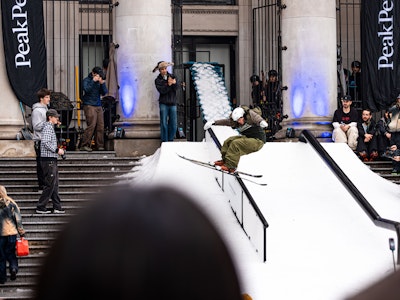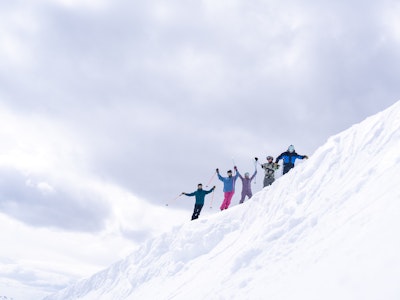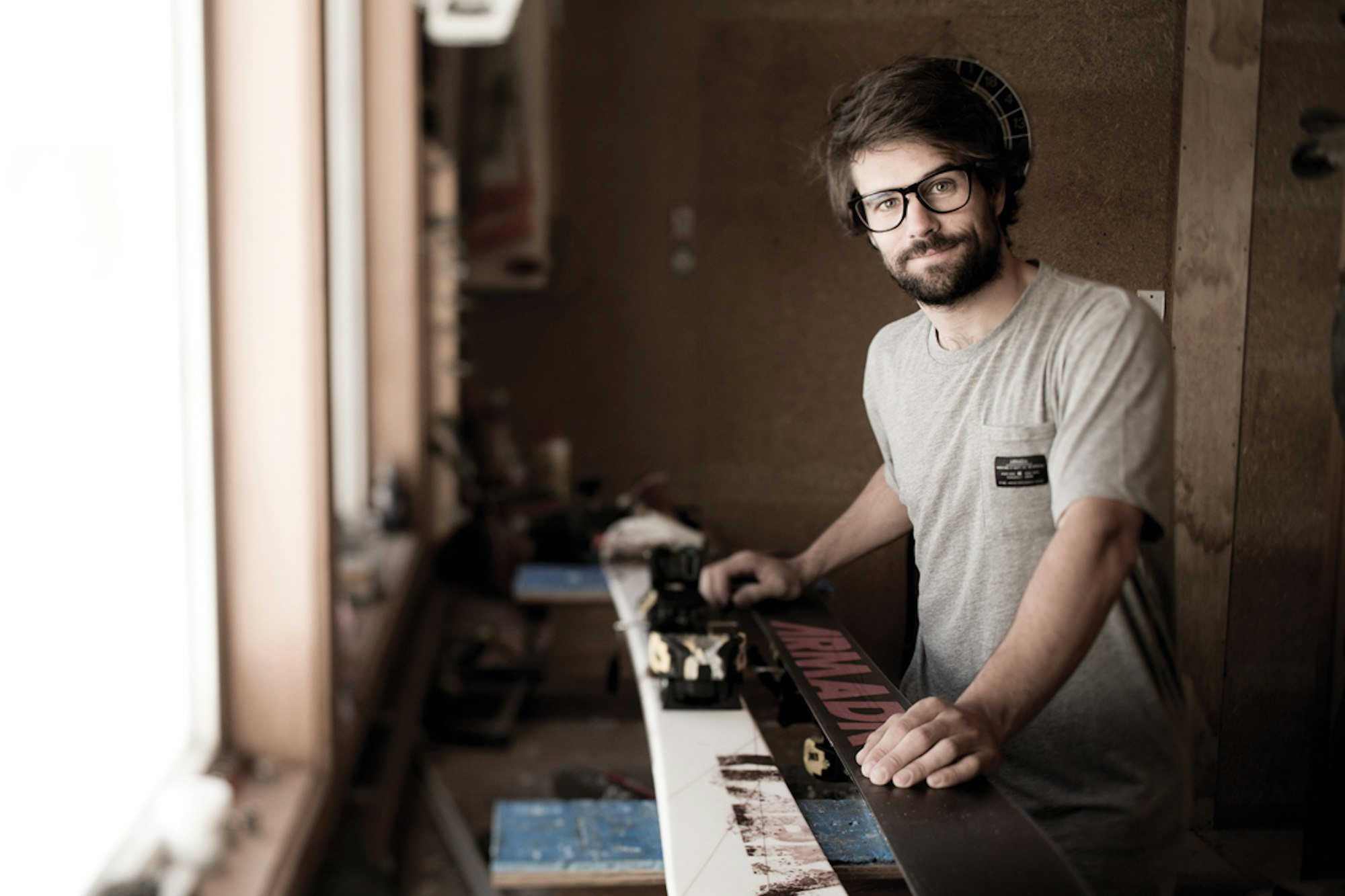This text originally appeared in FREESKIER magazine, Volume 17.5. It is posted here today as we recognize the one-year anniversary of JP and Andreas’ passing.
A million things can be said about JP Auclair as a skier. He pioneered and transcended genres and left an indelible mark on the sport. But there is so much more to JP. He was a genuinely good human being. He was my favorite person to be around because he was hilarious and because he was kind.
In the summer of 1997, I watched a VHS tape that showcased JP and JF Cusson skiing in the park at Mt. Hood. At the time, snowboarding was peaking, and in many places skiers weren’t even allowed in terrain parks. And skiers certainly weren’t doing tricks that rivaled the snowboarders’ in difficulty or style. To see JP and JF doing cork 720s blew my mind. As a snow sports photographer, I wanted to meet them.
I was a senior photographer with Snowboarder Magazine then, and that season I also began working with a startup ski magazine dubbed Freeze, as a contributing photographer. The following spring, the photo editor at Freeze blew out his knee, and in his place, I was sent to the Nordic jib land of Riksgränsen, Sweden. It was there that JP and I met for the first time.
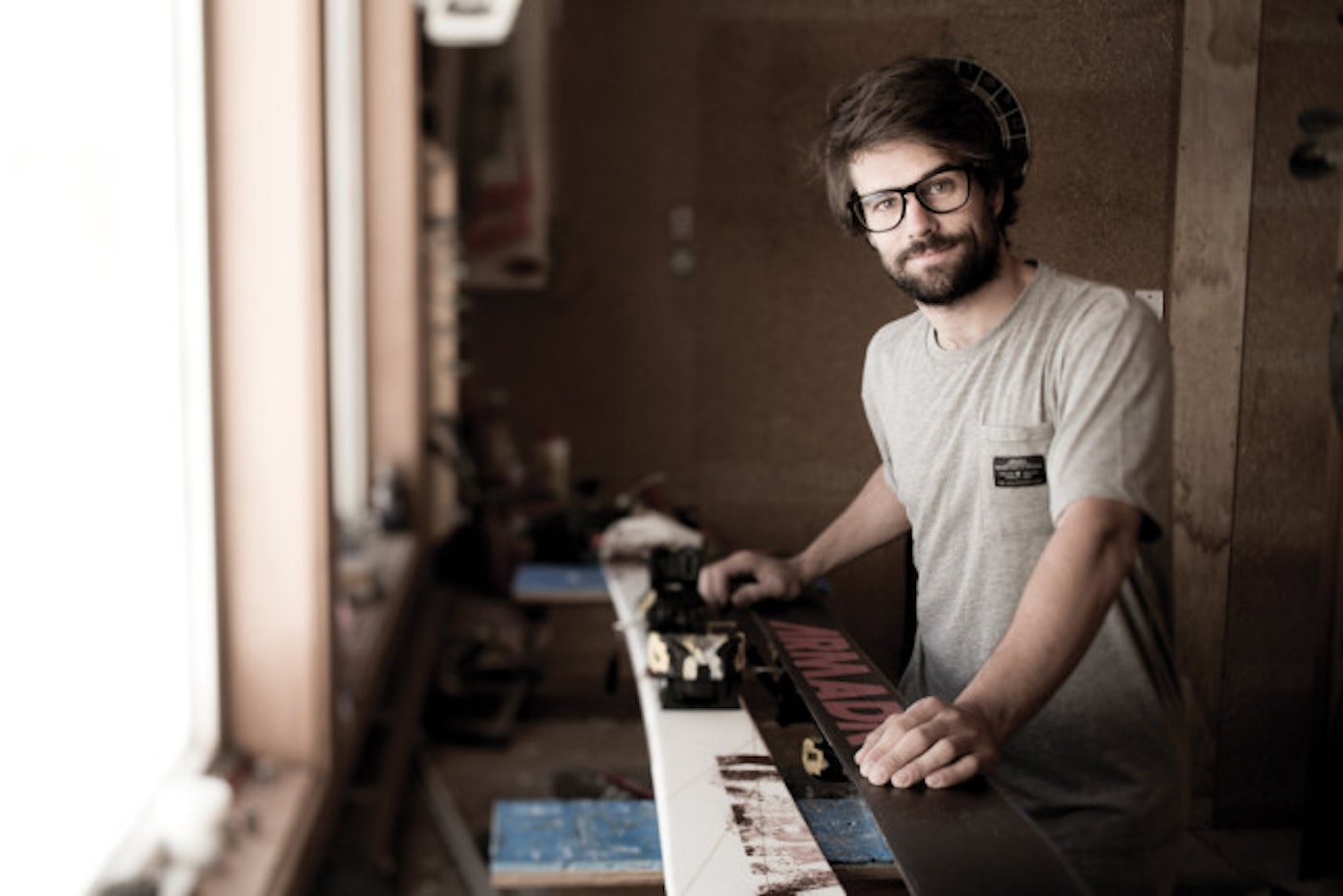
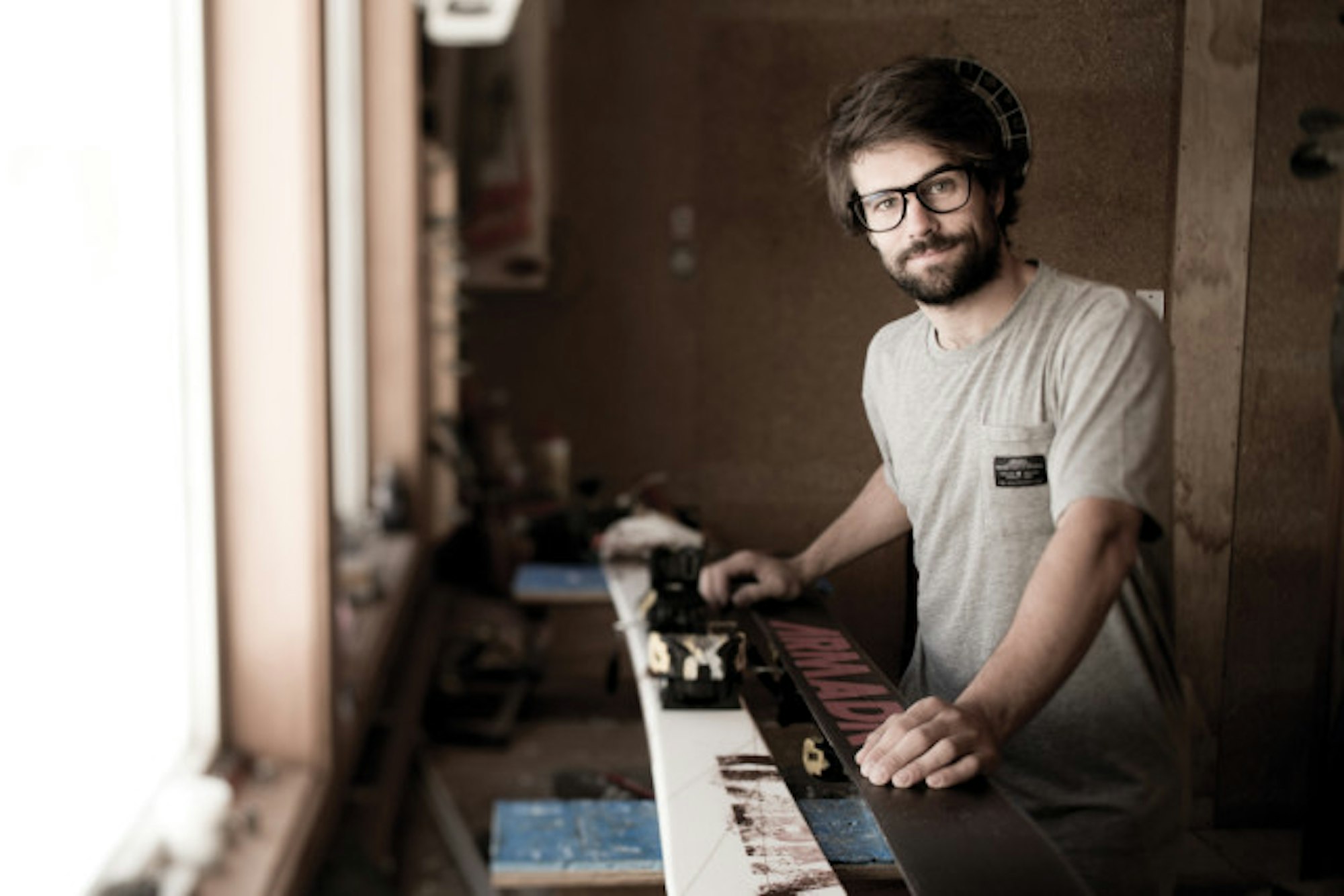
We hit it off. And that’s how it all began—16 years of traveling and working together. Often, those adventures involved appearances, autograph sessions and less than ideal ski situations. Always, he would put on a smile and give 100 percent, even if it was an awkward press conference in China and he knew quite well that the British Columbia Interior was getting hammered with snow. He would shred the icy, pre-season slopes of Colorado when duty called or log extensive hours in the Armada office to bang out a product video. The man was a champion, no matter how adverse or inane his task. That was part of what made him so good.
Ironically, JP and I shared a sense that what we were doing—while fulfilling in the context of the ski world—at times seemed frivolous. We spent a lot of time traveling to the far ends of the earth, and we weren’t building bridges or irrigation systems, or providing access to clean drinking water. Instead, we were doing it for skiing. We often spoke about how the collective snow sports industry didn’t really make a positive difference in the world.
JP acted on those feelings. In his downtime, he founded Alpine Initiatives, a nonprofit created to help orphans of AIDS victims in Meru, Kenya. He went there on multiple occasions to actually build orphanages with his bare hands and minimal tools. Real grunt labor. He was a giver. Alpine Initiatives has since refocused its efforts to support mountain communities here in North America. The organization is just one of many legacies that JP leaves behind.
It is not until now, in his absence, that I realize many of the fondest memories of my adult life come from the crazy trips we shared together, from Turkey to China, Norway, British Columbia, Alaska, Japan and New Zealand. But of course that’s the case. I loved him that much. We started a fucking company together. JP and I started Armada to save skiing. That he’s not here to see what happens with the brand down the line and with skiing and with his son and with everything—it’s mind numbing.
It was refreshing to see a super brilliant skier continuously reinvent himself in a sport where most athletes come and go in short cycles. JP just kept on going as his peers dropped into obscurity. He was one of those people who did everything really, really well. Usually, you might harbor at least a touch of brotherly resentment for someone who was just so perfect—his looks even mirrored his ageless skiing. Instead, you loved him because he was so humble and just so plain nice. He made you laugh, deep down, every time you saw him. When it’s now said, as it oftentimes is, “No one ever said a bad thing about JP,” that’s not just cliché, it’s the truth.
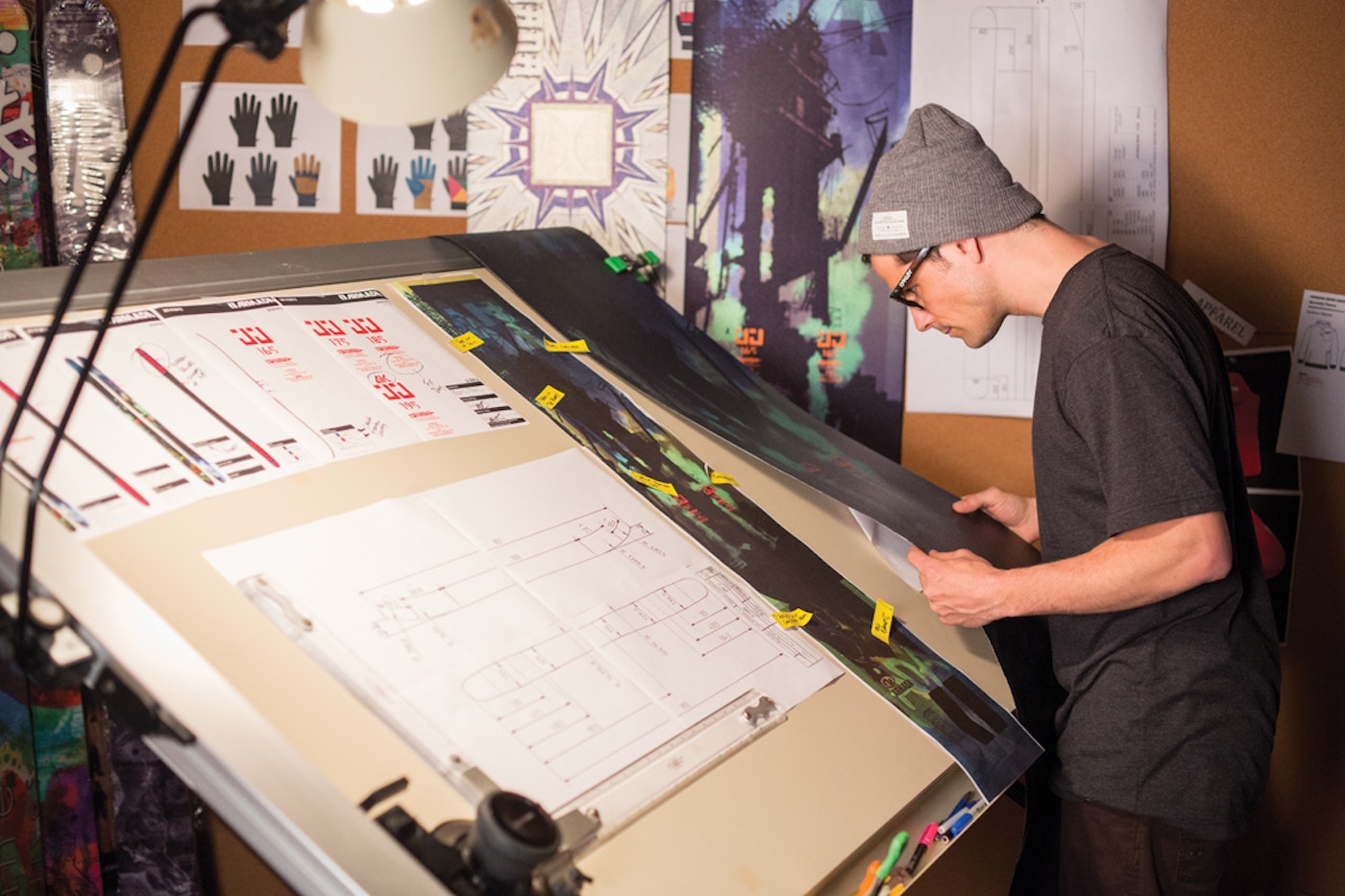
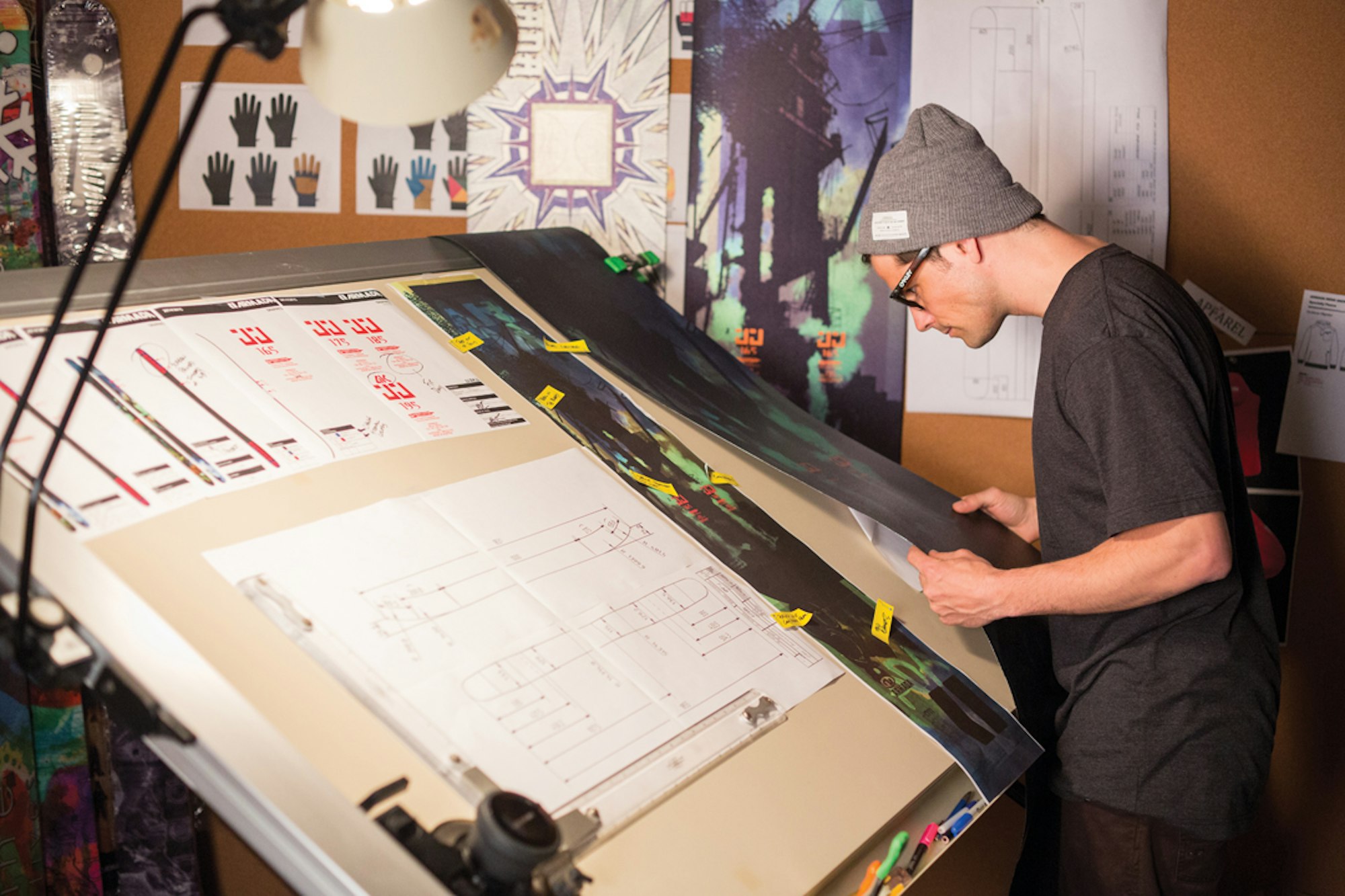
As a ski designer, he helped develop the first-ever halfpipe-specific ski. He contributed to the design of the first commercially available five-dimensional ski with rocker and camber. He and Julien Regnier made skiing powder simple for the masses when they created the oft-emulated JJ. He built a burly mountaineering ski, the Declivity. In the past 15 years, he helped design cutting-edge skis, outerwear, gloves and goggles for numerous companies.
When the entire industry was primarily focused on the racing scene, he helped start the first rider- owned, rider-driven brand. It was a catalyst to propel the newschool scene into its current state, which so many people refer to as freeskiing. JP wasn’t a fan of that verbiage, though. He thought it was all skiing. “They don’t call it ‘freesnowboarding,’” he’d say.
JP was one of those guys who, when he wanted to do something, would just teach himself to do it. He wanted to become a better ski mountaineer, so he learned the ins and outs of being a guide. He learned how to rock climb, and he teamed up with Andreas Fransson. He wanted to take pictures, so he bought my old camera and started taking photos. He was good. Really good. He wanted to edit movies, so he learned online, and also from Johnny DeCesare, how to use Final Cut Pro. Eventually, he went on to direct one of the most unique, most-watched ski film segments in history: his street skiing part in Sherpas’ All.I.Can.
JP also loved pizza, and there was only one way to order it—diavola style. He was a connoisseur. He would text me pics of his pizzas from Italy, Montréal, Haines— wherever he was—as he knew that I shared the love of ’za. For him, the best pizza in the world was ironically not made in Italy; it was Pizza Riva on Tal Street in Munich, Germany. It is pretty damn good. We shared meals there while in town for the ISPO trade show, and we laughed our asses off at the things you can only laugh at if you’ve worked in the ski industry for your entire adult life.
It was over a diavola pie last year, at Pizza Riva, that JP told me how lucky he was to be able to learn from Andreas Fransson, who had become a new partner to him. He had so much respect for Andreas. JP developed the skill set to be able to ascend and descend with the world’s best in just a few years. Many didn’t know how good JP had become at ski mountaineering, as it takes time to be known in that arena. Braggers are shot down quickly by the core. After a month-long stint in Chamonix, France, JP commented, “It’s all calculated, and you just ski one turn at a time. It’s a different kind of skiing, but it’s really fulfilling.” That kind of skiing is the pinnacle and only for a select few.
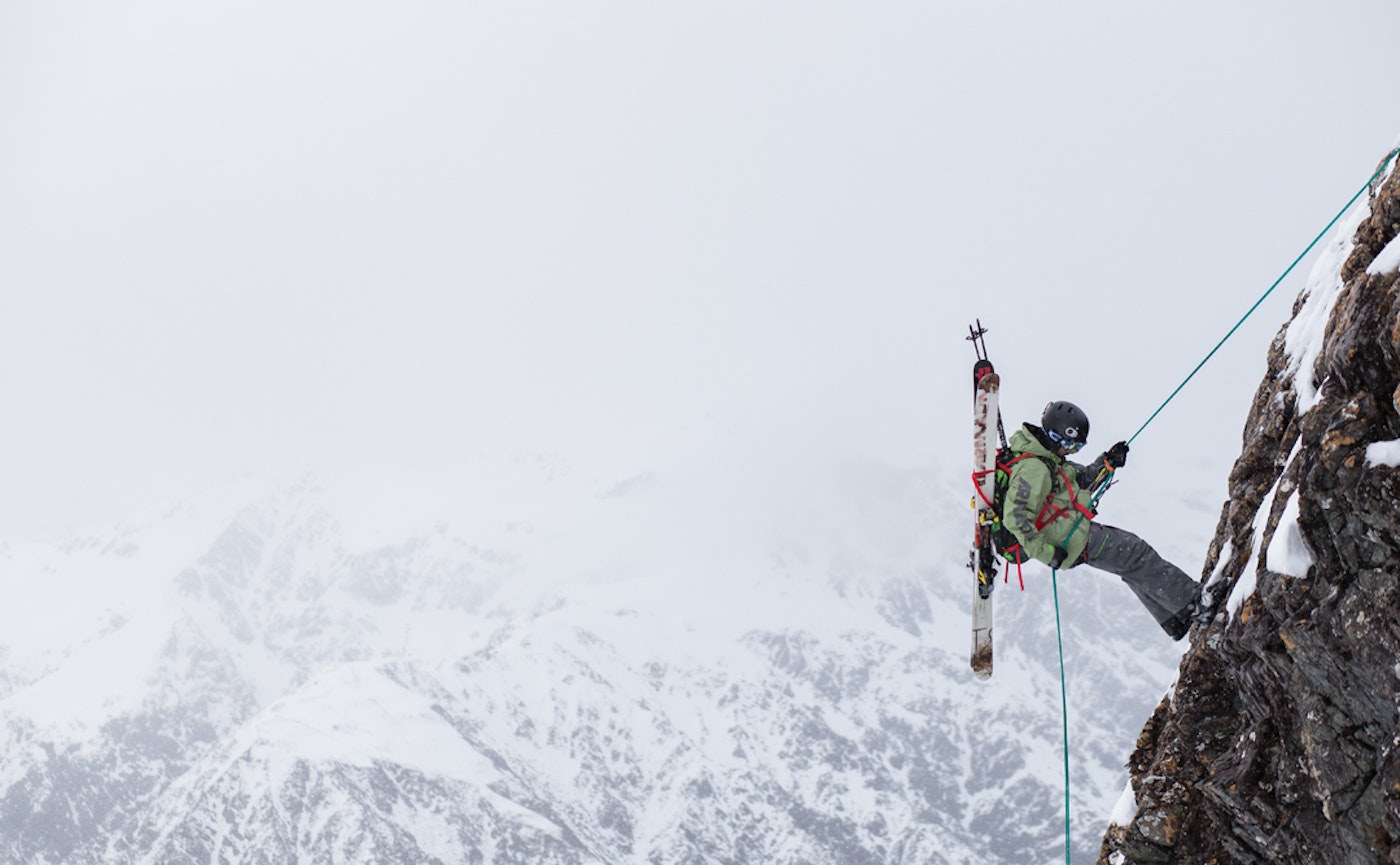
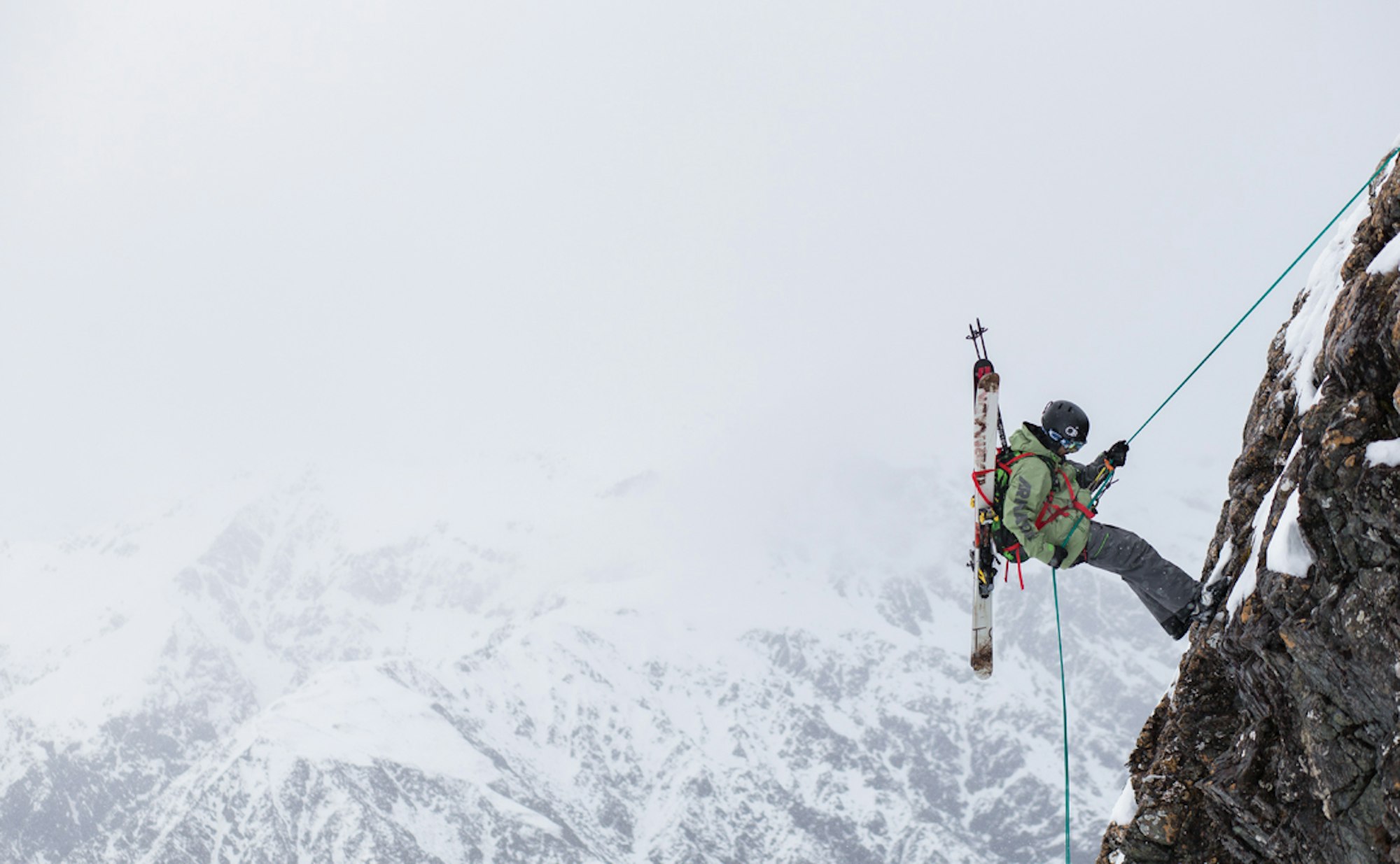
Who would have thought that a mogul kid from Québec could have such great impact on the sport of skiing in so many different facets? JP was the sport’s true Renaissance man. There isn’t another athlete who was on such a high level in so many different disciplines, nor will there likely ever be again, now that every single genre is so specialized. Hell, nowadays there is hardly a top halfpipe competitor that can shred slopestyle at an elite level. But JP could do it all. From the X Games to the world of ski mountaineering and everything in between, JP helped create and define skiing as we know it. He was the first and the last of two decades’ worth of skiers never to be equaled. Not even close.
To top it all off, he worked more behind the scenes than most skiing professionals work on snow. JP did it all. Whether it was in front of or behind the camera, on a computer, in an editing bay, out skiing a sketchy pipe or climbing an icy couloir, he did it with skill and precision. Skiing as we know it wouldn’t exist without the contributions of JP Auclair. His natural ability to do just about anything on skis, coupled with his understanding of the business, granted him one of the longest athletic careers the sport has known.
There is no peace in the loss of JP, but there is solace in the circle of life. This past summer, both JP and I welcomed babies to the world—sons. In the infancy of these lives, it’s harder to become jaded and easier to marvel at what’s ahead. If what these two individuals do here on earth is even a bit as creative and brave as what JP has done, it will be exciting. Maybe they’ll build bridges and bring people clean water. Or maybe they’ll just go skiing and make pictures.
In recognition of JP and Andreas’ extraordinary contributions to the sport of skiing and their unwavering commitment to spread good will, please consider a donation to one or more of the following charities: The Auclair Fund, proudly managed by friends of JP Auclair, Alpine Initiatives, and Armada; and Safe Passions, established in Andreas’ honor, with an aim to bring awareness of safety in the mountains to youths and young adults.


![[GIVEAWAY] Win a Legendary Ski Trip with Icelantic's Road to the Rocks](https://www.datocms-assets.com/163516/1765233064-r2r26_freeskier_leaderboard1.jpg?w=200&h=200&fit=crop)
![[GIVEAWAY] Win a Head-to-Toe Ski Setup from IFSA](https://www.datocms-assets.com/163516/1765920344-ifsa.jpg?w=200&h=200&fit=crop)

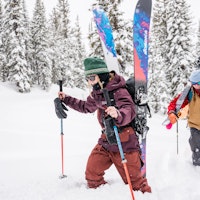
![[GIVEAWAY] Win a Legendary Ski Trip with Icelantic's Road to the Rocks](https://www.datocms-assets.com/163516/1765233064-r2r26_freeskier_leaderboard1.jpg?auto=format&w=400&h=300&fit=crop&crop=faces,entropy)


![[GIVEAWAY] Win a Head-to-Toe Ski Setup from IFSA](https://www.datocms-assets.com/163516/1765920344-ifsa.jpg?auto=format&w=400&h=300&fit=crop&crop=faces,entropy)


